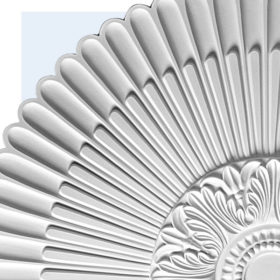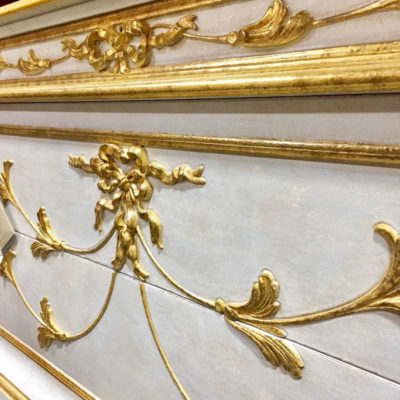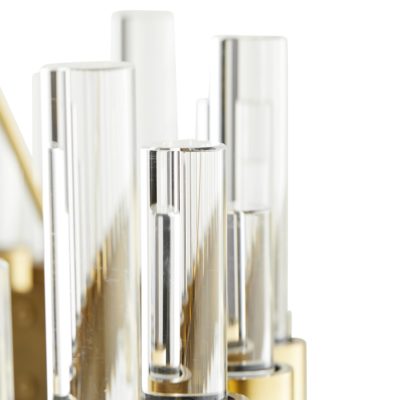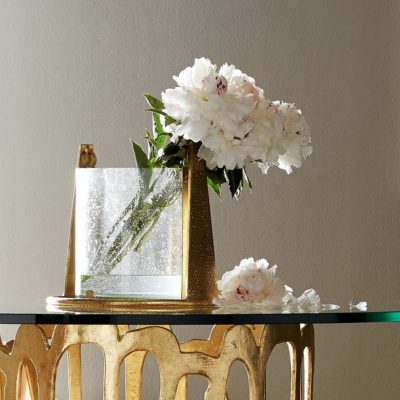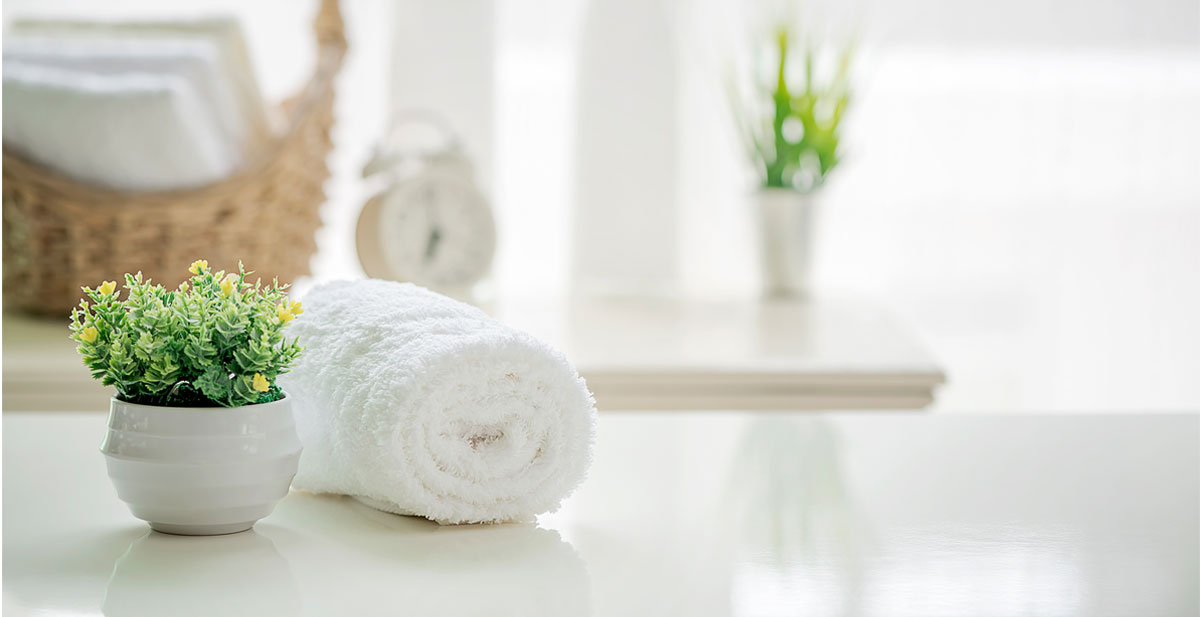A crucial component of maximizing wall space is the installation of counters. An important design decision is how to treat the surface space of counters, that is, what material to use. You’ll need ample horizontal surfaces in these rooms for practical reasons, and because of their visual prominence, making them attractive as well as useful is essential.
Before installing any new horizontal surfaces in your bathroom, question the location of the toilet. If it is opposite the entrance to the room, you’ll either have to keep the door shut or look at a necessary but essentially unattractive fixture. The view into a bathroom should be enticing. This may require relocating the toilet. By tucking it to the right or left of the entrance door, it is out of sight until you are in the space.
Next, place the bathtub, the fixture that takes up the most space. Once the toilet and tub are set, then you can think about the ideal spot for the sink and counter space. Aim for one elevation with a surface long enough for a sink with ample space on either side. Don’t crowd in two sinks at the expense of generous counter space. Better to select a large, oval sink with plenty of room left over for flowers, hand towels, and soaps.
In bathrooms, I prefer glazed ceramic tile surfaces because not only are they beautiful and available in a variety of colors and designs, but they are very easy to clean. You can cover a plywood surface with any tiles you choose. One client covered her bathroom sink counter with green handmade French-glazed tiles. Now she can leave her bathroom door open and feast her eyes on the beautiful green tiles reflected in the mirror above, which doubles the visual space as well as the impact of the tiles.
Most bathrooms have a cabinet underneath the counter, but in a small bathroom, the cupboard doors may seem confining. In small spaces, I prefer ledges with open space below. One client chose an elegant pair of Lucite legs to support the sink ledge in her bathroom. They have the look of crystal, with brass tops and feet to add a light touch of grace. Consider hanging some prints on the wall underneath the sink to enjoy them from the bedroom or when taking a bath.
If you decide not to have under-sink cabinets and don’t want the traditional medicine cabinet above, you’ll need a place to keep bathroom items. Perhaps small shelves or cubbies could be installed on either side of the sink elevation, or you could store supplies in a free-standing cabinet against another wall.
If you have a small, high window in your bathroom, consider installing a ledge and covering it with four-inch-square tiles, repeating the same style on the front ledge, to give an awkward window some definition and beauty. You can even repeat these same tiles in several rows on the three walls above the tub for continuity. If the tiles are especially elaborate, use primarily white tiles to line your walls above the tub, interspersed randomly with the patterned tiles. If your tub doubles as your shower, tiles should continue to the height of the shower head or the ceiling.
Next, to glazed ceramic tiles, marble is my choice for sink counter material. Marble is usually more formal than glazed tiles, but in a classical, traditional house, it is elegant and appropriate.
If you own your house and intend to live in it for a long time, invest in mirrored walls or vast expanses of a mirror in the bathroom because they make the space twice as commodious. However, don’t install a mirror where it will have direct contact with water.
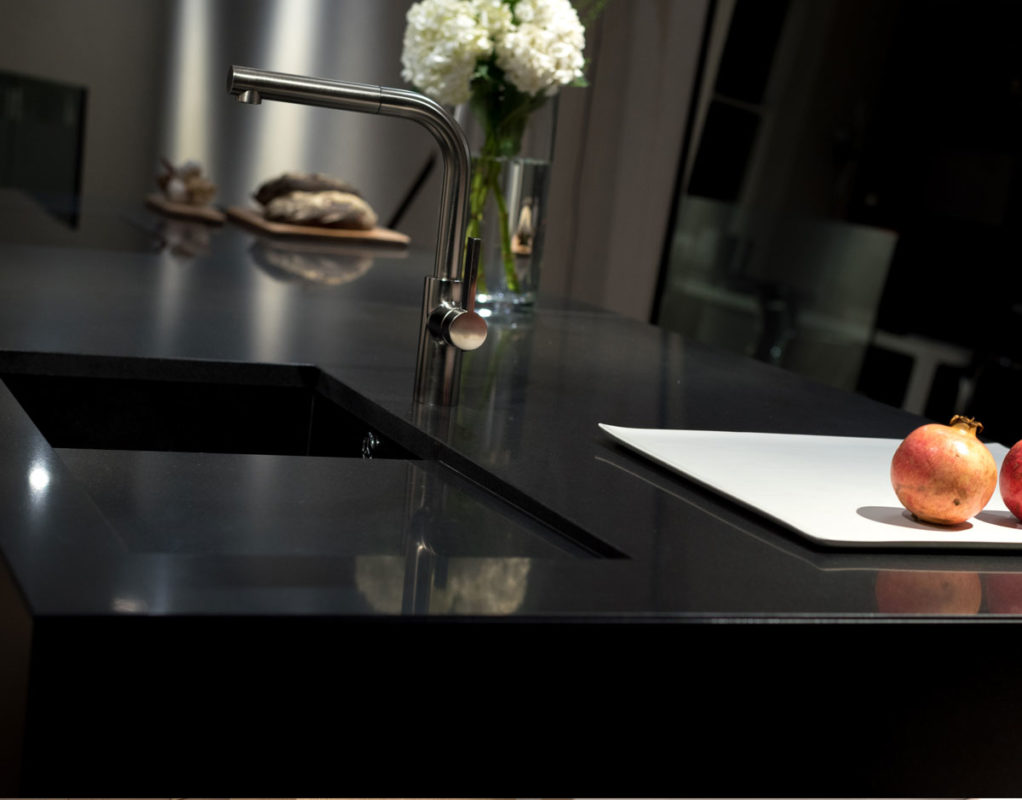
There are several options when choosing the ideal material for kitchen countertops. I have a particular passion for butcher-block counters because not only are they practical for chopping but I find them organically beautiful, warming up a space that contains cold, inanimate appliances. In a New York City apartment kitchen, a client’s two-inch-thick butcher-block counters line up with the window trim of a huge picture window on the wall opposite the door into the room. To the left of the window is a square counter with a round copper bar sink, leaving enough space for a small, square, American pine farm table where the family can have breakfast. By installing an eight-inch-deep ledge underneath the kitchen window and covering it with two rows of tiles, the client can place flowering plants in the morning sunlight. The counters continue on the north, south, and west walls, with one area raised from thirty-six to forty-one inches high so the client can stand and work without leaning or sitting on a high stool. (If you are tall, you will want high counters in the bathroom and laundry area as well as in the kitchen.)
As a result of the attention given to the counter space in this kitchen, the family uses this light, bright space as a gathering place. Kept free of appliances and clutter, the counters are ready to be used by children decorating gingerbread cookies or by parents paying bills or wrapping birthday presents.
Butcher-block counters not treated with a protective polyurethane coat require regular sanding to keep the surface fresh. Though there are a wide variety of practical materials for kitchen countertops that are easier to maintain than an untreated butcher block, I prefer the raw maple for two reasons. First, water eventually causes the polyurethane to peel off; second, the coating gives the wood an undesirable orange tint. Untreated wood also shows all the grease spots that attract insects, so once you rub out these spots with sandpaper, you know your counters are sanitary.
The easiest counters to care for are water and stain resistant, namely plastic laminates and pressed marble, though some hard marbles have these qualities as well. But there are no maintenance-free materials. If someone puts a hot kettle on a wooden surface, it can be sanded until the burn mark disappears, but if the same kettle is put on a pressed marble or plastic laminate counter, the surface will melt, making you replace the whole counter.
Organic, non-synthetic materials tend to age well. Even if marble is cracked or glazed ceramic tiles are chipped, this is not necessarily unattractive, but scratches in plastic might be. Finally, it is essential to choose a material you love for your kitchen counters because you will touch them more often than most surfaces in your home.

